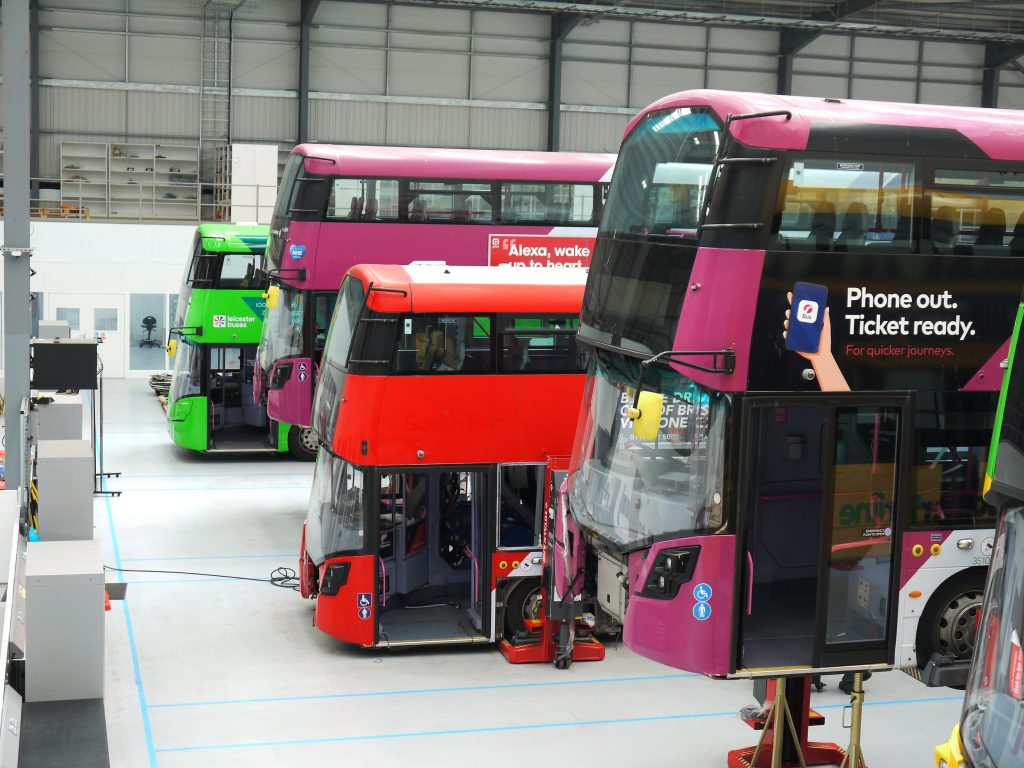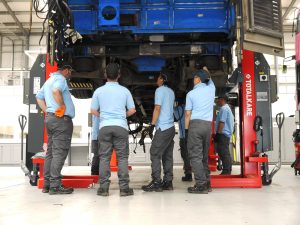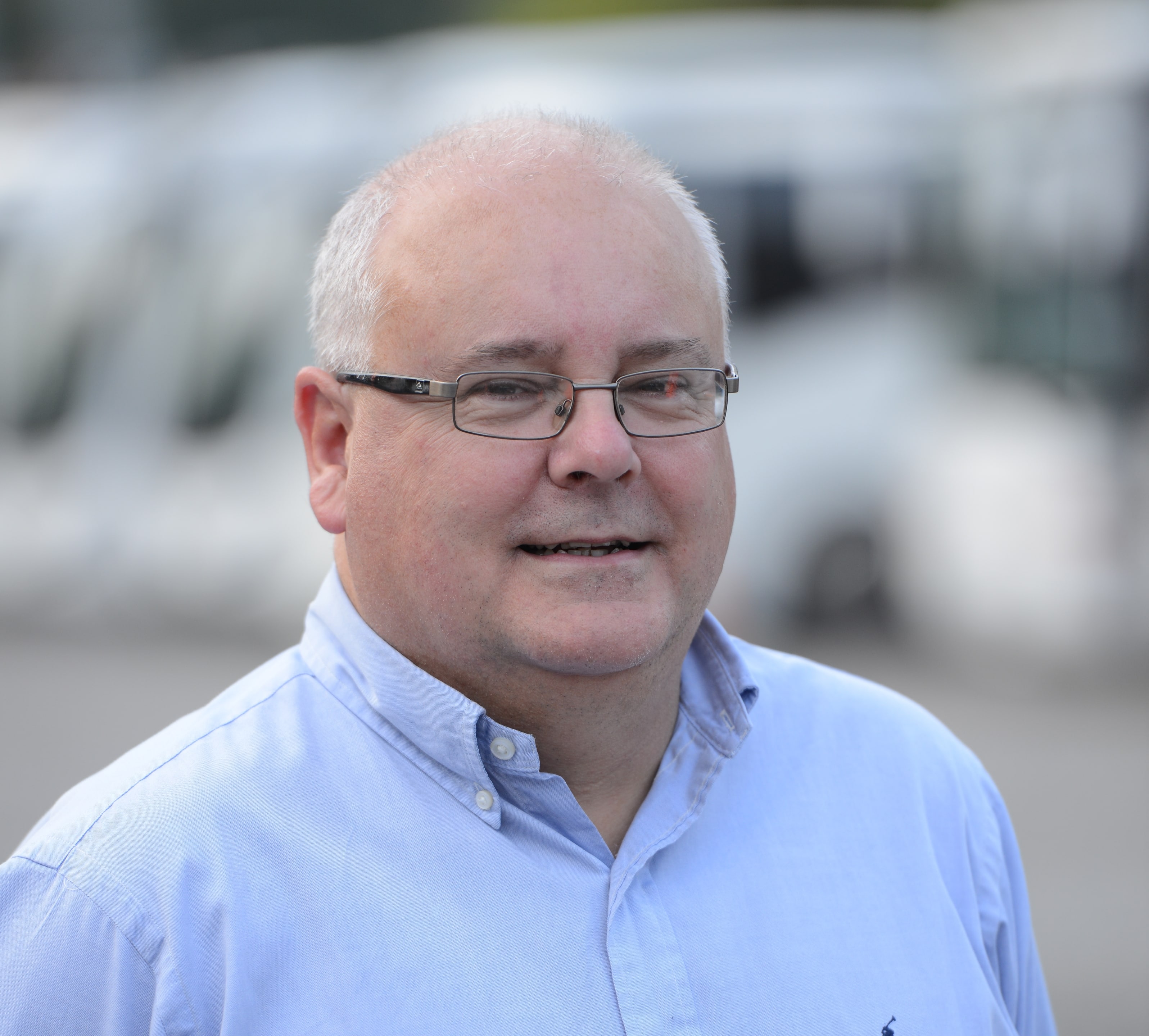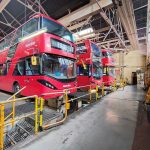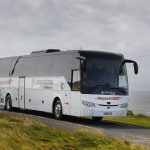A unique means of decarbonising the coach and bus sector rapidly and at reduced cost is through repower — the process of retrofitting a vehicle’s existing diesel or diesel-electric hybrid driveline and engine with a new battery-electric drivetrain and battery.
The financial burden of transition to battery-electric is a driving force behind that as an alternative, but many operators will also be conscious of the lifespan of current diesel models within the context of emission control zones and other limits on such vehicles. Repower makes a great deal of sense there, avoiding the need to write off an asset early. There is also an argument that retaining an existing asset for a longer period of time negates the carbon cost of building an entirely new vehicle.
On 20 June Wrightbus became the first OEM to enter the repower market. Prototype repowered buses had been completed in Ballymena in December 2023, with production beginning a week before the official opening day. Throughput of the facility is six buses at a time, giving a processing potential of 500 vehicles per year. routeone was invited along, and took the opportunity to discuss repower ambitions with Wrightbus CEO Jean-Marc Gales (pictured, below).
 Utilising existing assets
Utilising existing assets
Wrightbus’ repower business has been dubbed NewPower. Located in a dedicated facility on Empire Road in Bicester, it sits close to other refurbishment work that the company already undertakes on nearby Murdock Road through the AllServiceOne aspect of the business.
That’s an important angle for Wrightbus. As much as the reduced cost of repower versus new battery-electric presents a cheaper and more rapid alternative to introducing cleaner drivetrains, there is a long-term corporate social responsibility twist in squeezing as much life out of existing assets as possible.
“Some customers just want an electrical powertrain, but some customers want a total refurbishment,” says Jean-Marc. “We can do both. From repower to paint, cosmetic work in the interior, new carpets, even new brake discs and anything else related to servicing and refurbishment. The whole thing is about reusing existing assets, removing the need to build them up again and not creating more CO2;reutilising buses that are between five and nine years old and giving them another 10-year life as fully electric vehicles.”
The repower process at Wrightbus replaces a vehicle’s existing drivetrain with a Voith Electric Drive System and NMC Forsee Power Zen 77+ battery system. 77kWh modular battery packs generate 308kWh in four-pack or 385kWh in five-pack guise. A Grayson Thermal Heat Pump is integrated into the existing HVAC unit. Range at half capacity for the four and five pack repowers is 143 miles and 178 miles, respectively, according to Wrightbus, and a full OEM warranty is included in the work.
A sliding cradle houses the new battery packs in the engine compartment, while additional packs are located in the main saloon floor over the nearside front wheel arch and are housed within a fibreglass cover that integrates with the existing wheel box. Vehicles currently available for repower include all diesel and hybrid variants of the Wrightbus StreetDeck, the Wright-bodied Gemini 2, all variants of the New Routemaster, and other “competitor bus models”.
A typical 17-year total cost of ownership (TCO) analysis predicts that a StreetDeck NewPower comprising a Euro VI diesel converted to EV after seven years returns a TCO on parity with a new Euro VI diesel, and when excluding OPEX rebates, a 340kWh battery-electric vehicle. TCO predictions of converting diesel to NewPower include a 41% reduction in maintenance costs, 17% reduction in energy costs, and a 13% increase in OPEX rebate availability.
Wrightbus joins other players in this market, but sees clear advantages being an OEM. That includes scale, turnaround time, warranty and service support. The facility is already fully booked until the middle of 2025 with First and another customer that has not yet been named, and plans are to expand the facility’s 22 staff to 65 by the end of this year.
Call for government support
There will be no shortage of work if the venture proves popular. Ambitions include repowering vehicles in both the UK and the EU; Jean-Marc notes the 34,000 diesel buses already on the road in the UK, and as of 2022 diesel-powered buses remained the most popular vehicle of choice in the EU, accounting for 67.3% of all new bus sales according to the European Automobile Manufacturers’ Association.
“The venture could last another 20 years,” Jean-Marc says. “It’s a never-ending story. Well over half the new buses sold in the UK today are diesel, and they will need to be repowered in five to nine years if we want to achieve our net zero targets by 2035 or 2040.”
The facility has also distanced itself from the Wrightbus name to cater to other vehicle types; tentative ambitions already exist to repower trucks and other heavy-duty vehicles, and new facilities would be considered to expand NewPower’s scope.
Despite presenting a quick win for operators and local air quality ambitions, there has not yet been central government support for repower. Jean-Marc is keen for that to change, and has made it clear Wrightbus will be asking the new government for assistance. “To give support to repower would be fantastic. We have already had conversations with finance companies that can help our customers fund repowered buses, and so far all of them have undertaken repower without support. But if we could get government to take closer look, it would be helpful.”


















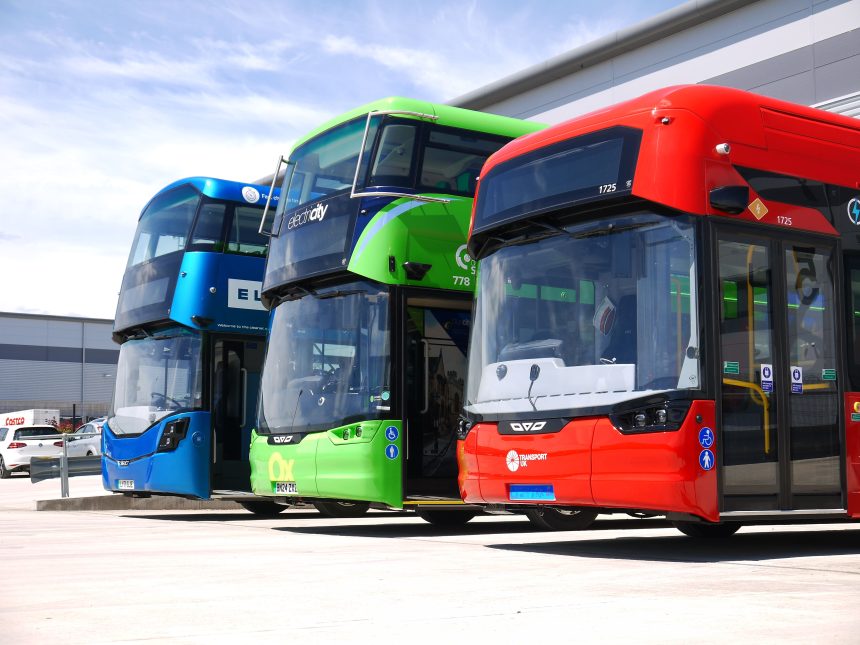
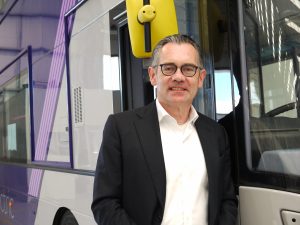 Utilising existing assets
Utilising existing assets